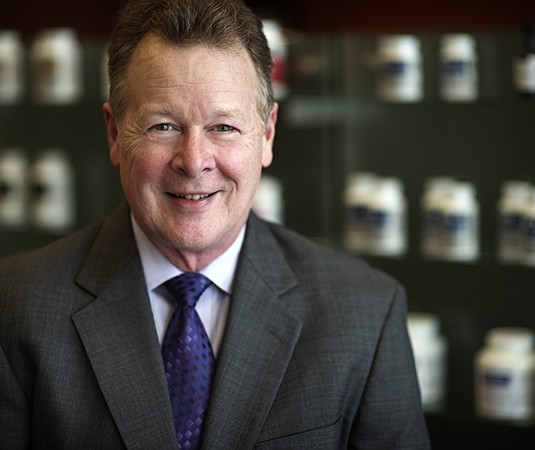by Jim Paoletti, BS Pharmacy, FAARM, FIACP
Establishing relationships with knowledgeable, high-quality compounding pharmacies can help you provide a diverse range of therapeutic choices for patients, in addition to improving compliance. Compounding allows medication to be personalized to the individual, which can help you overcome frustrating obstacles by providing customized solutions for patients with a wide variety of special needs.
Patient Non-compliance is an Issue That Affects All Practitioners
Treatment strategies can only be effective with patient compliance. The compounding pharmacist can address the issues which most commonly lead to poor compliance, including:
- Difficulty swallowing a capsule or tablet
- Medication causes GI tract upset
- Reluctance to take medication because of its taste
- Taking too many medications
- Dosing frequency
One of the more common requests of compounding pharmacies is to place the ingredients of a tablet or capsule into a liquid because of difficulty in swallowing the prescribed medication. The compounder will investigate stability of the medication(s) and determine an appropriate liquid formula and formulate a palatable liquid dosage form that will as much as possible mask any taste problems.
Some manufactured liquid medications have a very unpleasant flavor or aftertaste that may lead to poor patient compliance. A compounding pharmacist can flavor many existing medications to make it more palatable without compromising the stability or effectiveness of the medication.
The compounder can also suggest alternative dosage routes to resolve compliance issues with medications. Medications in tablets or capsules can often be compounded into sublingual dosage forms, or into penetration-enhanced transdermal bases for local or systemic application. These compounded solutions can be used for patients who have difficulty in swallowing tablets and capsules, or to prevent stomach upset caused by oral administration. A great example would be the use of Ketoprofen for knee pain. The total amount of Ketoprofen taken orally is significantly greater than the amount actually required at the site of action, the knee. When the orally administered drug is distributed throughout the entire body, only a fraction gets to any one specific area. However, Ketoprofen can be applied directly to the knee in a transdermal base and requires the use of less Ketoprofen to be used. This alternative route would also avoid stomach upset, and effects on the liver.
If patient compliance is poor due to patient resistance to the number of medications they are supposed to take, the compounder may be able to combine medications into one dosage form and reduce the number of oral dosage forms the patient needs to take. If the problem is remembering or being willing to take a medication the number of times a day needed to maintain a therapeutic level, the compounder may be able to provide a slow release capsule form of the medication in question.
Customize Medication Strengths
Often a manufacturer makes only limited strengths of a medication, while your patient may benefit most from a specific strength. Compounding provides that flexibility.
Recreate Discontinued Formulas
Manufacturers may discontinue production of a medication based on economic reasons alone—not because of safety or efficacy issues. When discontinuation occurs. the compounding pharmacist can obtain the formula and compound the medication in a precise dosage form. Although in general compounding pharmacists are not permitted to compound a duplicate of a commercially available medications, exceptions are made when a medication has been difficult to obtain.
Reduce Fillers and Preservatives
Commercial medications often contain unwanted or unneeded inactive ingredients. Preservatives, dyes, lactose, glucose, and sugar are common ingredients that some patients must avoid.
Create Novel Formulations
Compounding pharmacies have specialized equipment to make unique dosage forms and preparations that wouldn’t otherwise be possible. For example, Urea 40% cream or ointment to remove toenails requires the use of an ointment mill to make a non-gritty, user-friendly form.
Utilize Mini-trouche Delivery Methods
Another good example of a unique dosage form is the mini-troche. This is a small sublingual or vaginal troche that was originally designed to be administered sublingually for medications that did not require a large amount of active ingredient. Another popular use for the mini-troche is vaginal administration of estriol with or without testosterone for the treatment of vaginal dryness or atrophy.
Provide Other Unique Delivery Formats
Compounding pharmacies can also make medicated lollipops. I found the use of nicotine lollipops very helpful for patients to slowly reduce their nicotine use and stop smoking. Medicated lollipops with electrolytes or pilocarpine work well for treatment of dry mouth. Tetracaine lollipops can be used for numbing pre-exam for patients with gag reflex, or pre and post-surgery. Healing and numbing agents combined can be used to treat oral lesions or antifungal, anti-viral or antibiotic agents to treat oral infections.
Compounding pharmacies employ other specific equipment and devices to produce tablet triturates, rapid dissolve tablets, transdermal gels and even medicated tampons. Some of the more interesting requests that I had as a compounding pharmacist were those for tampons infused with solutions of boric acid or gentian violet for vaginal infections. Although fun to make, I learned how easy it was to cause purple spots all over the lab with the use of gentian violet powder!
Contact your local compounding pharmacy or go to www.iacprx.org for a list of compounding pharmacies. They can discuss some of the options that can be provided to your patients.
Power2Practice makes custom compounding faster. Create, store, order and re-order compounded medications with the pharmacy of your choice, from within our EMR!
Brought to you by Power2Practice, the practice performance system built for integrative medicine allowing you to more effectively run and optimize your business. Our goal is to save you time, increase staff productivity, boost patient engagement and provide easy tools to increase your profits.
Watch this quick video to see why Power2Practice is different.
 Jim Paoletti, BS Pharmacy, FAARFM, FIACP, is a clinical consultant with over 30 years of experience creating and using bio-identical hormone therapies in both retail pharmacy and clinical practice.
Jim Paoletti, BS Pharmacy, FAARFM, FIACP, is a clinical consultant with over 30 years of experience creating and using bio-identical hormone therapies in both retail pharmacy and clinical practice.
Jim is a Diplomat in Functional Medicine in addition to being a former faculty member for the Fellowship of Functional Medicine. Jim is also author of the book “A Practitioner’s Guide to Physiologic Bioidentical Hormone Balance.”
At Power2Practice, he applies his wealth of knowledge and experience by hosting live webinars and creating useful content, such as blogs, podcasts and clinical support tools.

